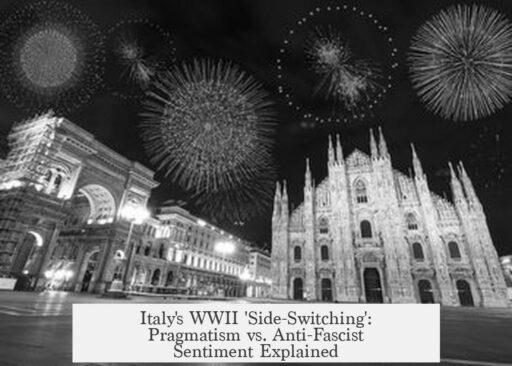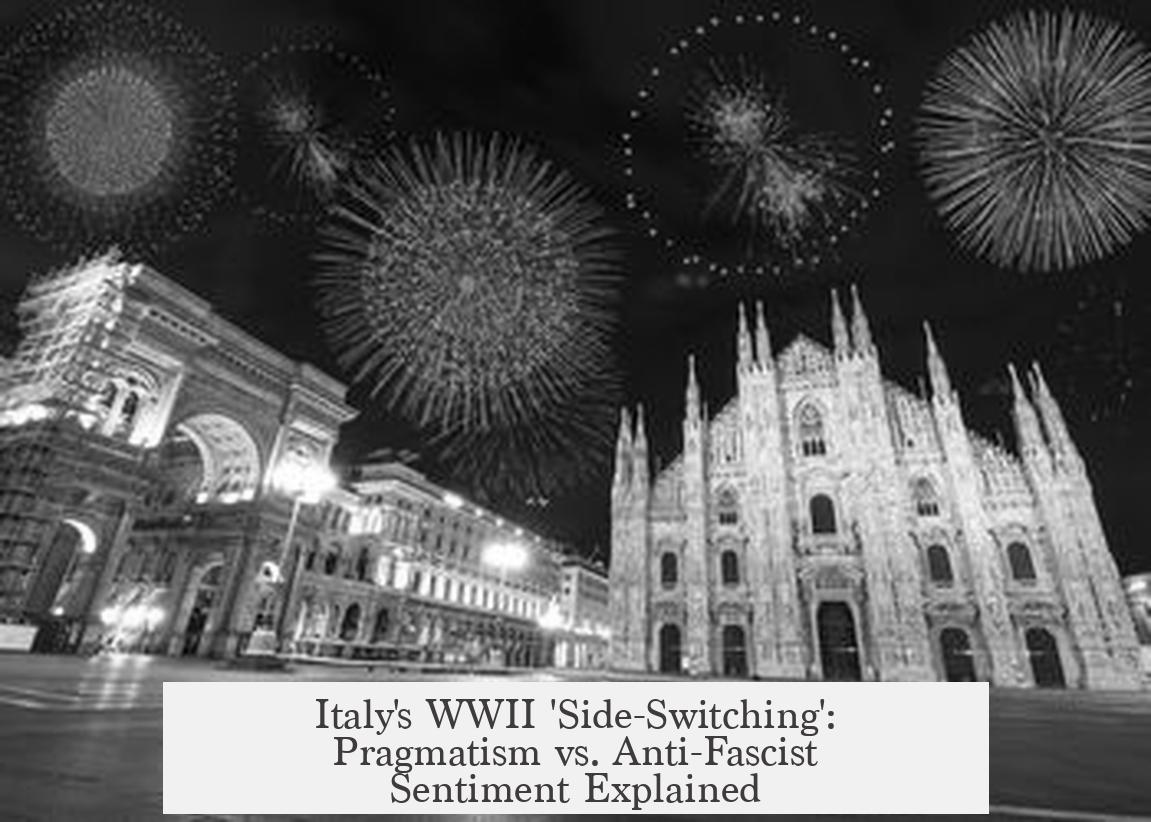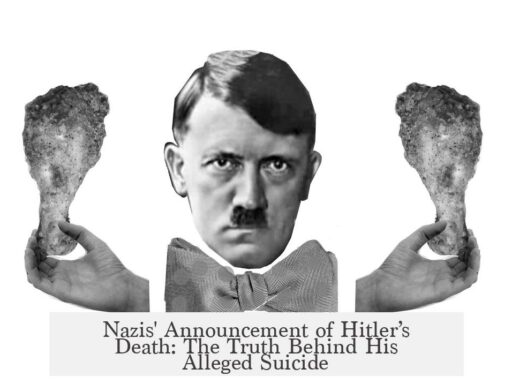Italy’s WWII side-switching was initially driven more by pragmatism than by anti-fascist sentiment, but the balance shifted sharply after the German invasion, giving anti-fascism a central role in the later resistance and political realignment.
At first, Italy’s fascist regime under Mussolini falls primarily because of military defeat and war exhaustion. The disastrous war effort shattered public and elite support for the regime. The king pragmatically dismisses Mussolini in mid-1943 to secure an armistice with the Allies. This move is a tactical attempt to end Italy’s humiliations rather than an ideological rejection of fascism.
Popular reaction to Mussolini’s downfall confirms this pragmatic mood. Italians discard fascist symbols en masse, reflecting fatigue rather than an organized anti-fascist uprising. The military and institutional leaders, although sidelining Mussolini, retain authoritarian control. This continuity suggests Italian elites prioritize stability over immediate democratization or ideological change.
The situation changes after Germany invades Italy and liberates Mussolini, reestablishing him as head of the puppet Italian Social Republic (RSI). This deepens political polarization. Hardcore fascists rally to the RSI and Nazi Germany, while opposition factions coalesce elsewhere. The German occupation forcibly clarifies alignments, elevating resistance and anti-fascist sentiment as driving forces in the struggle that follows.
During the German occupation, pragmatic political compromises solidify an anti-fascist coalition. Leaders from communists, socialists, Catholics, and former soldiers unite against fascism and Nazi forces despite ideological differences. Notably, communists support the monarchy temporarily to focus on the common enemy. This alliance underpins the Italian Resistance movement, which combats the occupation on moral and political grounds.
The formation of this broad anti-fascist front marks a shift from pragmatism to genuine anti-fascist commitment. The resistance fights not only foreign occupation but also aims to end fascism in Italy permanently. The parties leading the resistance become the foundation of postwar Italian democracy, continuing governance for decades.
| Phase | Main Driver | Characteristics | Outcome |
|---|---|---|---|
| Phase 1(Pre-German invasion) | Pragmatism | War fatigue, regime failure, king’s tactical dismissal of Mussolini, limited anti-fascist activity | Collapse of fascist regime; authoritarian military government replaces Mussolini |
| Phase 2(Post-German invasion) | Anti-fascism | German occupation, puppet state formed, polarization, broad anti-fascist resistance formed through alliances | Sustained resistance movement; defeat of fascism; postwar democratic government established |
This dual-phase experience shows that early side-switching was pragmatic, seeking to end Italy’s disastrous war participation without clear ideological opposition to fascism. Anti-fascism became a sincere and dominant political force only after external events catalyzed resistance. Thus, pragmatic necessity opened the door for anti-fascist coalitions to form and eventually shape postwar Italy.
- The 1943 fall of Mussolini results from military defeat and pragmatic monarchy action, not immediate anti-fascism.
- The German invasion and establishment of the Italian Social Republic polarize Italy politically, bringing anti-fascism to the fore.
- Anti-fascist resistance emerges from pragmatic collaboration across diverse groups shared by the goal to defeat fascism and occupation.
- Italy’s WWII side-switching involves an initial pragmatic phase, followed by a genuinely ideological anti-fascist resistance.
How much of Italy’s WWII ‘Side-Switching’ was driven by pragmatism vs. anti-fascist sentiment?
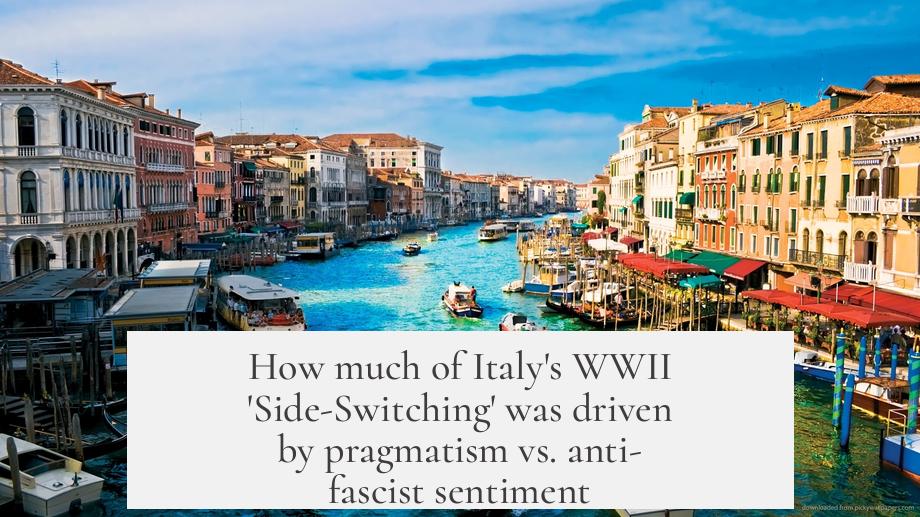
When Italy switched sides during World War II, pragmatism overwhelmingly set the stage first, while deep anti-fascist sentiment came later and truly shaped the resistance. That’s the story. It plays out like a two-act drama where survival tactics crash headlong into idealistic fight-back. So, how did this transformation unfold? Let’s unpack the layers.
Italy wasn’t exactly cheering Mussolini’s war efforts by 1943. The country was beaten down, exhausted, and humiliated. You’d almost think Italians threw a “finally done with this” party when Mussolini was ousted. His fall came in the summer of 1943, orchestrated more by pragmatic royal decision-making than a groundswell of ideological revolt.
The king, sensing disaster, acted decisively. He dismissed Mussolini as Prime Minister, had him arrested, and installed General Pietro Badoglio to steer negotiations with the Allies. This resembles less of a moral uprising and more of a calculated move to pull Italy from the chasm of conflict. The military defeats were brutal, devastating the regime’s hold on the nation.
“The disastrous and humiliating war had crumbled the consensus of the regime… the king could dismiss the dictator as Prime Minister of the kingdom… to start negotiations for surrender with the Allies.”
Because, let’s be honest — most Italians weren’t banging pots against fascism itself at this moment. They were simply enraged by the regime’s catastrophic blunders. The regime’s flag, medals, and party cards hit the dust. Ordinary citizens expressed downright frustration and disgust. Yet, this was a rejection fueled by failure and exhaustion, not ideological anti-fascism.
Meanwhile, the military elites and institutions didn’t exactly flip the script. They maintained authoritarian power, just wearing a different uniform. So, the initial side-switching was not a heartfelt political revolution but rather a pragmatic retreat from a sinking ship.
But then—enter Act Two: The German Invasion and the Italian Social Republic
When Germany invaded and reinstated Mussolini to head the puppet Italian Social Republic, things became sharply polarized. Suddenly, the stakes changed. The hardline fascists rallied behind the Nazis. Their vision? Keep fighting with ruthless loyalty. On the other side were people who realized this new fascist state was a nightmare puppet, forcing them onto the path of resistance.
“The birth of the Italian Social Republic… acted as a catalyst for die-hard fascists… while other groups moved toward resistance.”
This puppet state forced Italy to pick sides not just pragmatically but ideologically. Anti-fascist feelings, largely dormant or sidelined earlier, began to dominate. Resistance groups—communists, socialists, Catholics, former soldiers alike—united with one common thread: overthrow Nazi occupation and fascism.
The alliances formed were remarkable. The communists teamed up with the monarchy, socialist politicians flourished, and democratic governments emerged to head the opposition. It was a coalition forged both by necessity and genuine ideological resolve. Their resistance shaped the future of Italian democracy.
“Palmiro Togliatti’s communists agreed to support the monarchy… former soldiers and militant communists, socialists and Catholics joined forces to fight an anti-fascist resistance… supported by the new democratic Italian government and the Allies.”
What can we learn from this two-phase saga?
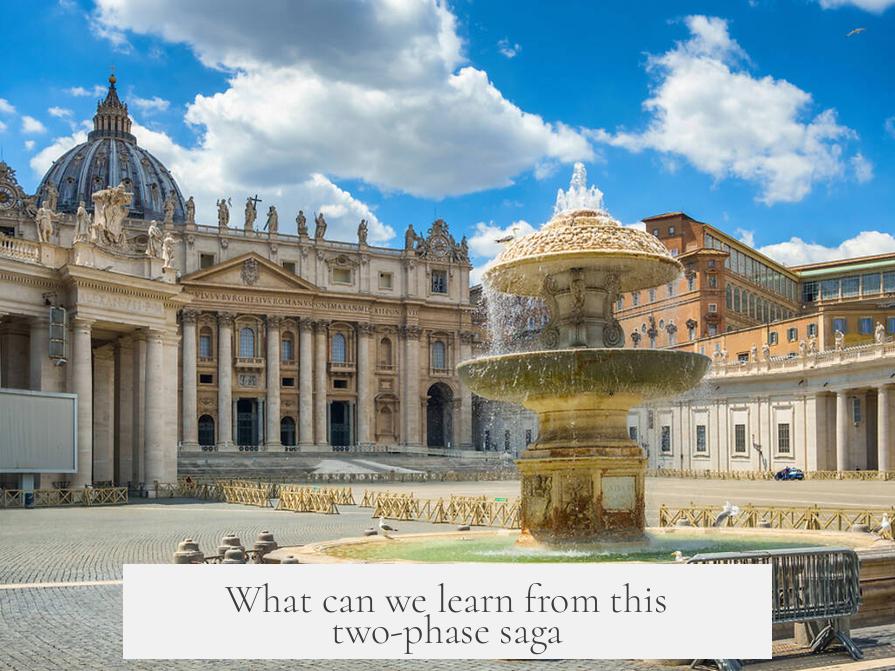
| Phase | Primary Motivation | Nature of Side-Switching | Key Features |
|---|---|---|---|
| Initial Fall of Mussolini (Summer 1943) | Pragmatism | Regime collapse driven by military defeat | King’s pragmatic dismissal, national exhaustion, regime rejection without ideological uprising |
| Resistance under German Occupation (1943–1945) | Genuine Anti-Fascism | Coalition formed among diverse anti-fascist groups | Resistance against Nazi puppet state, strategic alliances bridging ideological divides |
To crystallize it, Italy in WWII didn’t switch sides because of a sudden, mass awakening against fascism. Instead, the initial switch was a cold-blooded calculation—‘How to get out alive and stop the bombs.’ The king’s actions and the military’s choices typify this mindset.
Anti-fascist sentiment gained momentum only as the German occupation tightened its grip and Mussolini’s puppet state took shape. This second chapter was a raw and passionate ideological fight for liberty, knitting together Italians across political lines to resist oppression.
What does this dual-layered history tell us today?
Firstly, it challenges the neat theater-style narrative where good versus evil lines are clear-cut. Reality is messier. Italy’s “side-switching” was a complex mix of desperation and idealism, evolving over time. Historical circumstances forced pragmatism first—and only later, when the threat became immediate and personal—did ideological anti-fascism become the rallying cry.
Secondly, it gives us practical insight on how political shifts often happen, especially in crises. Survival instincts tend to lead initial decisions before ideals take center stage. The pragmatic king and his generals were like firefighters stopping immediate flames rather than architects reshaping society.
And in that sense, the anti-fascist resistance represents the rebuilding phase, where meaningful ideological commitments can flourish once the immediate threat is faced head-on.
Bringing it home
If you’re ever debating what drove Italy’s wild change of heart during World War II, remember this: pragmatism was the first player on stage—no one wanted Italy to burn to the ground more than it already had. Anti-fascism came as the second act, the real fire that fueled liberation and laid the groundwork for democratic Italy’s future.
How often do we expect political decisions in crises to be pure expressions of idealism? Italy’s WWII experience warns us to look deeper. Sometimes, the choice to “switch sides” is less about ideology and more about survival—until the moment where ideology and survival converge in a powerful battle for a nation’s soul.
So, whether you’re a history buff, a politics fan, or just wondering how nations decide their fate, Italy’s WWII story offers a fascinating glimpse into how pragmatism and ideology can dance, collide, and ultimately shape the course of history.
What motivated Italy’s initial decision to switch sides in WWII?
Italy’s initial side-switch was driven mostly by pragmatism. The military defeats and regime exhaustion made the king remove Mussolini. Italy sought to negotiate surrender with the Allies rather than fight on ideological grounds.
Did anti-fascist sentiment lead to Italy’s early fall from Mussolini’s rule?
Not at first. Early in 1943, Italians rejected Mussolini due to war failure and fatigue, not strong anti-fascist beliefs. The regime’s fall was more about practical failure than a united ideological rejection.
How did the German invasion change Italy’s political landscape during WWII?
The German invasion in 1943 polarized Italy. It revived hardline fascists loyal to Mussolini and Nazi Germany. This also pushed anti-fascists to unite more clearly against the occupying forces and the puppet Italian Social Republic.
When did anti-fascist motivation become a main factor in Italy’s war effort?
Anti-fascist motives took center stage after the German invasion. The resistance formed by communists, socialists, Catholics, and others united pragmatically and ideologically to fight the fascist regime and Nazi occupation.
How did pragmatic compromise play a role in the anti-fascist resistance?
Anti-fascist parties made pragmatic agreements, like supporting the monarchy temporarily, to form a united front. This coalition was essential in organizing resistance and eventually leading postwar democratic Italy.
